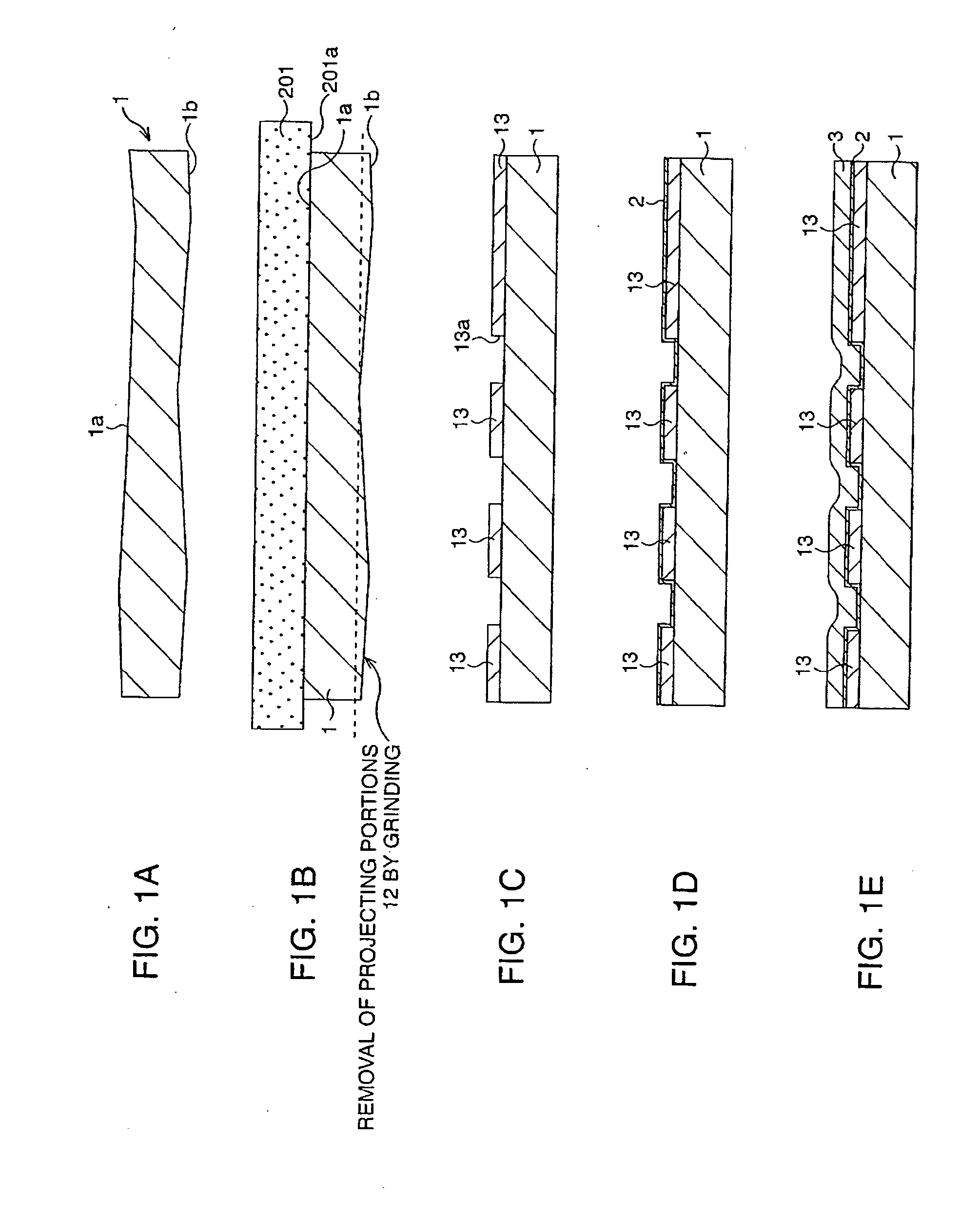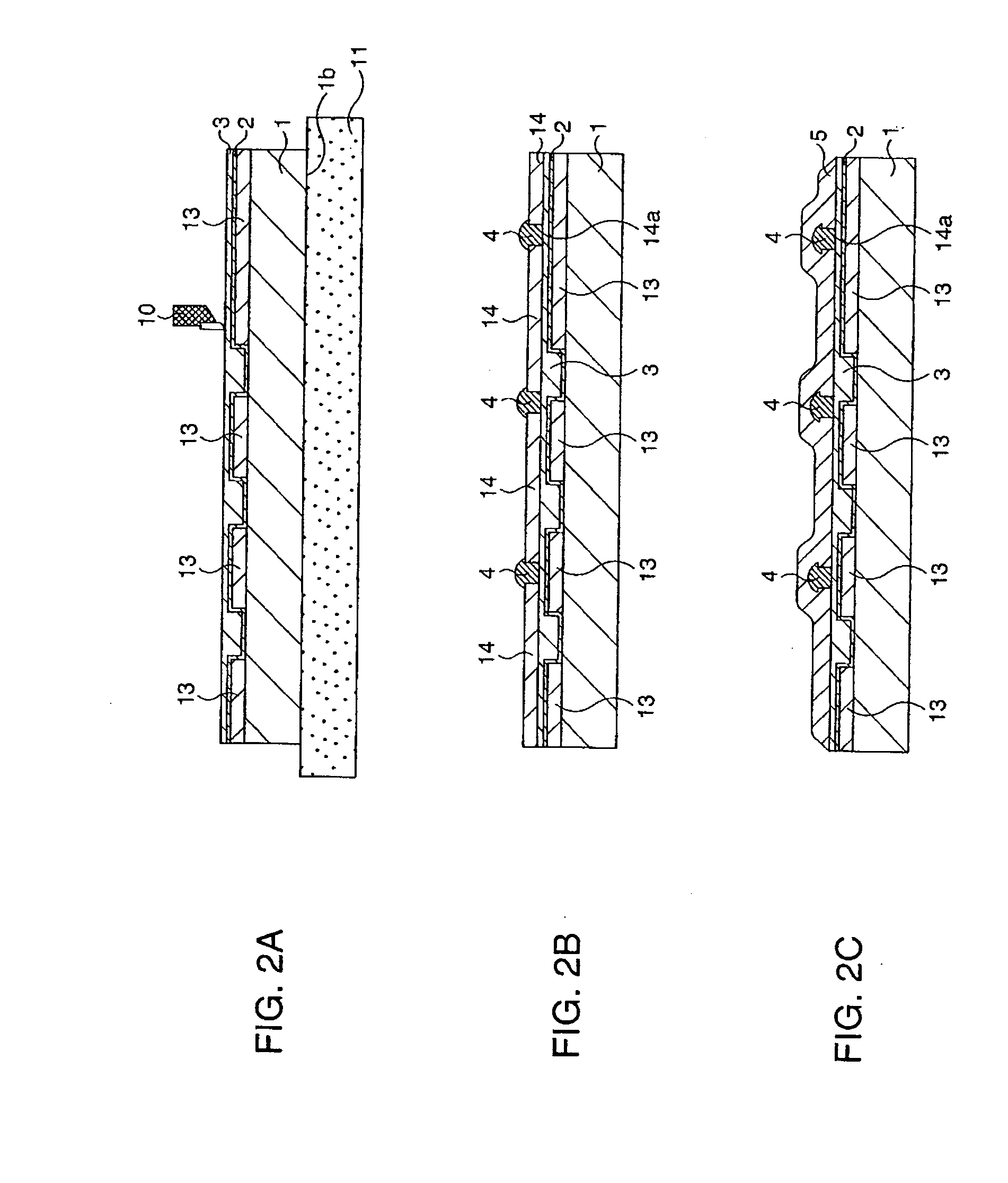Semiconductor device, wiring substrate forming method, and substrate processing apparatus
a semiconductor and substrate technology, applied in the direction of semiconductor/solid-state device manufacturing, electrical equipment, basic electric elements, etc., can solve the problems of high manufacturing cost, difficult scaling down, circuit damage, etc., and achieve easy and inexpensive high-speed planarization, easy fine control of thickness, and efficient removal of substrate
- Summary
- Abstract
- Description
- Claims
- Application Information
AI Technical Summary
Benefits of technology
Problems solved by technology
Method used
Image
Examples
specific embodiments
[0051] Based on the aforementioned basic gist, specific embodiments of the present invention will be described below using the drawings.
first embodiment
[0052] Here, a silicon semiconductor substrate (silicon wafer) is shown as an example of a substrate, and a case where a multilayer wiring formed by staking wirings in plural layers in an insulator is formed on the semiconductor substrate is disclosed.
[0053]FIG. 1A to FIG. 1E, FIG. 2A to FIG. 2C, FIG. 3A to FIG. 3C, and FIG. 4A to FIG. 4C are schematic sectional views showing a multilayer wiring substrate forming method according to this embodiment step by step.
[0054] First, as shown in FIG. 1A, a silicon semiconductor substrate 1 is prepared. Usually, the silicon semiconductor substrate is not uniform in thickness as shown and besides has undulations.
[0055] Hence, as a preceding process to subject one principal surface of the semiconductor substrate 1, here a substrate front surface (wiring forming surface 1a), to cutting with a tool which will be described later, the other principal surface of the semiconductor substrate 1, here a back surface 1b (of the wiring forming surface ...
second embodiment
[0110] Here, a silicon semiconductor substrate is shown as an example of a substrate, and a case where a multilayer wiring layer formed by stacking a plurality of wiring layers each composed of wirings in an insulator is formed when an LSI is manufactured is disclosed.
[0111] Among semiconductor devices including a multilayer wiring layer are those which have forms such as shown in FIG. 13 and FIG. 14. In the semiconductor device in FIG. 13, electrodes 63a are formed so as to surround a periphery of an element region 302 where plural (many) semiconductor elements (MOS transistors or the like) are formed in a silicon semiconductor substrate 301, and the respective semiconductor elements and the electrodes 63a are electrically connected. On the other hand, in the semiconductor device in FIG. 14, plural electrodes 63a are formed in matrix in the semiconductor substrate 301, and plural (many) semiconductor elements are formed between the electrodes 63a. Namely, in the case of FIG. 14, r...
PUM
 Login to View More
Login to View More Abstract
Description
Claims
Application Information
 Login to View More
Login to View More - R&D
- Intellectual Property
- Life Sciences
- Materials
- Tech Scout
- Unparalleled Data Quality
- Higher Quality Content
- 60% Fewer Hallucinations
Browse by: Latest US Patents, China's latest patents, Technical Efficacy Thesaurus, Application Domain, Technology Topic, Popular Technical Reports.
© 2025 PatSnap. All rights reserved.Legal|Privacy policy|Modern Slavery Act Transparency Statement|Sitemap|About US| Contact US: help@patsnap.com



